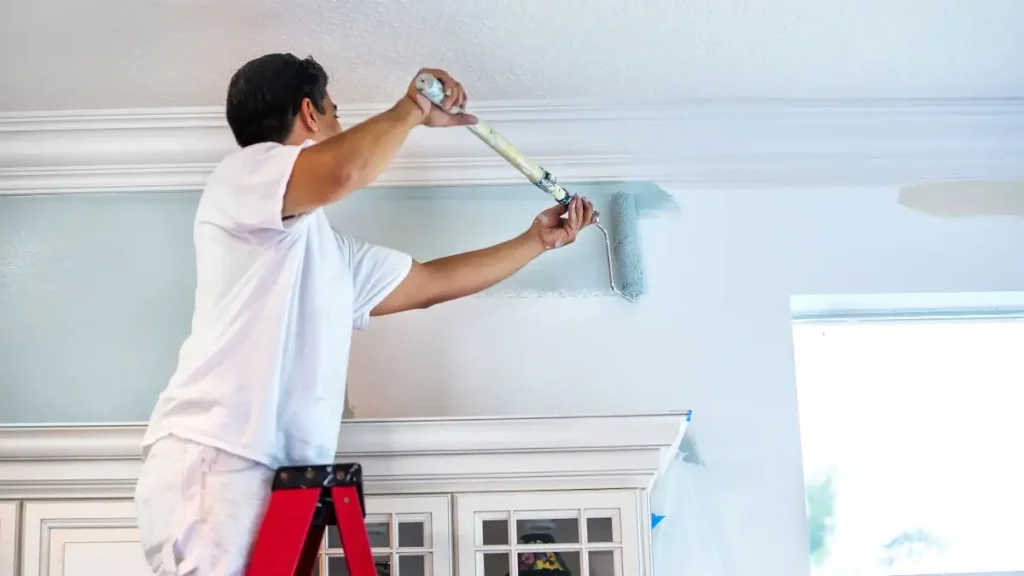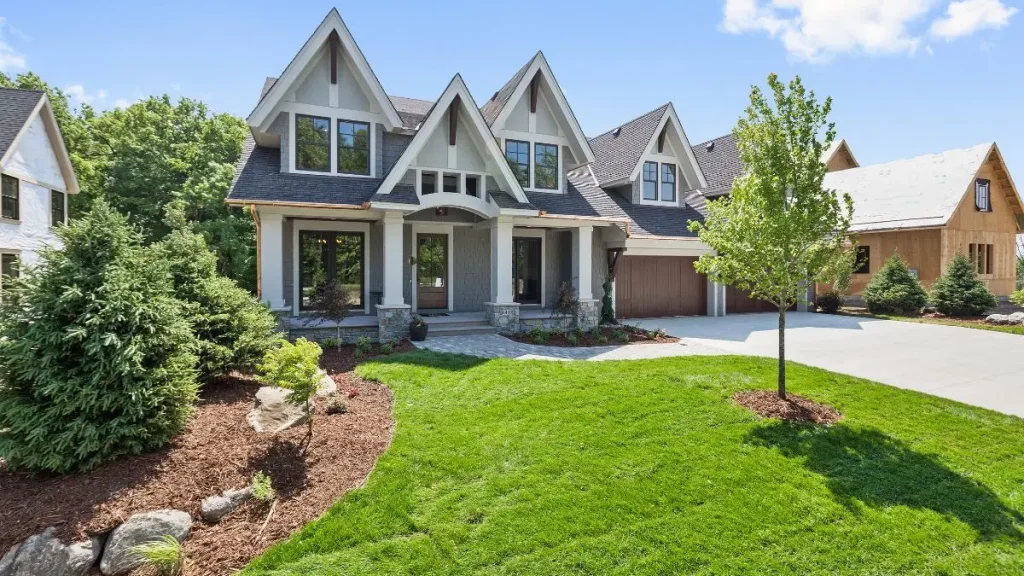5 Simple Ways to Improve Curb Appeal and Command a Higher Price
I’ll be real with you—buyers judge your home before they even open the door.
That quick glance from the curb? It’s either pulling them in or pushing them away. And the scary part is, it happens in seconds. You could have the world’s best kitchen inside, but if the outside looks tired or ignored, most buyers won’t even care to find out.
Tamara Moritz, a seasoned real estate agent at Coldwell Banker Realty in Austin, nails it:
“Today’s buyers are driven by curb appeal and look for exteriors that reflect their taste and appear well taken care of.”
And she’s right. Buyers don’t just want a house—they want to feel like it’s been loved and maintained. That feeling starts the second they pull up to the driveway.
There’s also hard data to back it. According to the 2025 Remodeling Impact Report by the National Association of Realtors, simple exterior upgrades like painting, landscaping, and replacing the front door offer some of the highest returns on investment—sometimes more than full kitchen remodels.
So, if you’re serious about attracting top-dollar buyers, you’ve got to start outside. Not with huge renovations, but with smart, focused updates that create instant emotional pull.
Think about it: Would you stop for a house with chipped paint, dying shrubs, and a rusty light fixture?
That’s why the next five tricks I’m about to share aren’t just “nice to have.” They’re seller essentials—simple, strategic moves that make buyers want to come inside and pay what your home is really worth.
What’s the first thing you notice when you pull up to a house for sale? Drop your thoughts in the comments—I’d love to hear.
Clean Windows, Walls, Walkways, Rooflines
Let’s be honest—dirt is a dealbreaker.
You wouldn’t show your living room with dust and clutter, right? So why do so many sellers ignore the grime on their siding, sidewalks, or windows?
Before buyers even notice the color of your door or how pretty your plants are, they see the dirt. And unfortunately, dirt reads as neglect—even when the rest of your house is spotless inside.
That’s why the first thing I recommend—before planting flowers or buying new hardware—is a deep clean of your exterior. Pressure wash the siding, clean the gutters, scrub the walkways, and don’t forget the windows. When light bounces off a clean surface, your home literally shines.
And it’s not just about “looking good.” Simple maintenance like power washing and window cleaning can add thousands to your home’s perceived value, with a return on investment that’s often higher than cosmetic upgrades.
Here’s a quick checklist you can follow:
- Pressure wash siding and front walk
- Clean windows (inside + outside)
- Remove cobwebs from overhangs and porch lights
- Sweep the driveway and clear edges
The best part? This facelift doesn’t cost much. You can rent a pressure washer for under $50 or hire a pro for around $150–$300 depending on your home’s size. Either way, it’s worth every rupee.
Trust me—this is the fastest way to make your home look $10K more expensive without spending even 1/10th of that.
Why Paint Is Still the No. 1 ROI Boost?

If there’s one curb appeal trick I swear by, it’s fresh paint. Nothing—and I mean nothing—makes a home look well-kept like clean, crisp trim and a freshly painted façade.
Buyers don’t just notice fading or peeling paint; they judge your overall home maintenance by it. And you better believe they’ll assume if you skipped the outside, the inside might be worse.
Chris Arienti, broker at Re/Max Executive Realty, says it straight:
“Paint is always the No. 1… Paint the shed, the trim work, and of course, the house.”
Even if you’re on a tight budget, touching up the trim, window sills, and porch railing can make a dramatic difference. Combine that with re-caulking corners or sealing edges—small touches that send a big message: This home is cared for.
Here’s the ROI kicker:
Re-caulking a home’s trim costs around $2.40–$4.90 per linear foot, and fresh exterior paint can increase a home’s value by 5–10%, depending on condition and location.
Not ready to repaint the whole house? No problem. Try this instead:
- Paint just the front-facing trim and shutters
- Choose a clean, neutral tone for siding touch-ups
- Add a complementary accent color to trim for contrast
This is where you build trust visually. When buyers see fresh paint and smooth, clean lines, it sends the message that you’ve taken care of the home, inside and out.
Got 5 minutes? These super-quick home fixes can help you polish your home fast—inside and out.
Front Door Glow-Up
Your front door isn’t just an entry point—it’s your home’s handshake. It’s the first place buyers pause. And in that pause, they’re deciding if your home feels welcoming or worn out.
I always tell sellers: if your front door looks tired, faded, or forgotten, buyers assume the rest of the home might be too.
Start with the basics. A fresh coat of paint—black, navy, or even a bold red—can make the entire front façade feel intentional. Don’t stop there. Replace rusted handles, swap old light fixtures, and ditch the decades-old doormat.
According to Realtor, even something as simple as painting or replacing the front door can dramatically influence your home’s value perception. In fact, the National Association of Realtors reports that a steel front door replacement can return 100% of its cost at resale.
Suzi Dailey from Realty ONE Luxe says it best:
“Have an appealing front door, and make sure it is freshly stained or painted.”
So here’s your front-door upgrade checklist:
- Paint or re-stain the door (bold but not loud)
- Install updated hardware (brushed nickel or matte black always works)
- Add symmetrical lighting (sconces or overhead)
- Refresh the welcome mat and planters
Also think about the path leading up to the door. Cracked steps, dull pathway lights, or dying plants can ruin the vibe. Make that walk feel like a warm welcome, not a warning sign.
A clean, confident front door does more than look good—it makes buyers feel something. And in real estate, feelings sell.
Once you’ve freshened up the entry, make sure you’re not making these common entryway mistakes that can silently kill your home’s first impression.
Low-Maintenance Landscaping That Looks Luxe

You don’t need a full-blown garden to make your home look polished—but you do need clean lines and healthy greens.
Here’s the trick: focus on low-maintenance landscaping that still looks intentional. Think trimmed hedges, neatly edged garden beds, and a green, weed-free lawn. That alone makes a buyer feel like, “Okay, these owners cared.”
Chris Arienti, the same broker who raves about paint, also says:
“Manicure the lawn, and ensure it is cut properly. Weed the garden beds.”
Why? Because it creates a feeling of control and care. Buyers love homes that feel easy to step into. Overgrown bushes, wild grass, or scattered tools give the opposite vibe—stress.
And the numbers back this up:
According to Better Homes & Gardens, basic lawn care has an average 217% ROI. Yep, you read that right—invest ₹10,000 and you might boost your home’s perceived value by ₹21,700 or more.
What should you plant? Stick with:
- Perennials (lavender, hostas, daylilies)
- Shrubs with structure (boxwoods, dwarf hydrangeas)
- Low-effort color pops (marigolds, petunias)
Keep it neat. Use landscape edging to frame beds and paths, and add mulch for that freshly-done look.
You don’t need to be a gardener. You just need a clean canvas with structure—that’s what makes your yard feel valuable, not just pretty.
Just like your lawn, the inside of your home should feel organized too. Here’s a guide on how to declutter before moving that pairs perfectly with curb appeal efforts.
3 Curb Appeal Mistakes Smart Sellers Avoid
Sometimes it’s not about what you add—but what you don’t do.
I’ve seen beautiful homes sit on the market longer just because of tiny curb appeal mistakes that looked small but made buyers question everything. And the worst part? Most sellers didn’t even realize they were turning buyers off.
Here are the 3 most common mistakes smart sellers avoid:
1. Over Decorating the Porch
Too many flower pots, knick-knacks, or bold seasonal flags? It gets distracting fast. Buyers aren’t here to see your personality—they’re here to imagine theirs. Keep it neutral, clean, and calm.
2. Ignoring the Driveway
Stained concrete, oil spots, or even cracked pavement can kill that “move-in ready” feeling. Power wash it. If needed, reseal it. A clean driveway tells buyers you maintain things below the surface, too.
3. Letting Small Repairs Slide
Loose gutters, a flickering porch light, or chipped trim might seem harmless… but to buyers, it feels like the home needs work. Fix it before the first showing. These minor updates cost less than ₹2,000 each but can protect thousands in resale value.
One smart homebuyer I worked with said:
“If the outside feels neglected, I wonder what I can’t see on the inside.”
And that sums it up. Buyers want to feel that your home is well-loved, not just well-listed.
Why Curb Appeal Isn’t Just Aesthetics—It’s Psychology
Here’s what most people miss: curb appeal isn’t just about making your home “look nice.” It’s about making buyers feel confident from the moment they pull up.
When someone sees a tidy lawn, a glowing porch light, and a freshly painted door—they assume the inside will reflect that same care. Their shoulders relax. Their interest deepens. Their offer price, often, goes up.
In fact, research from Michigan State University found that homes with strong landscaping and exterior care can sell for up to 11% more than those without.
But it’s not just numbers—it’s emotion.
Buyers are more likely to forgive small flaws inside if their first impression is strong. That’s the emotional leverage curb appeal gives you. It sets the tone for the entire walkthrough.
I often share practical tips like these in real time through a curated WhatsApp update feed that covers home selling, fire safety, renovations, and design wins. It’s a great place to stay one step ahead—no spam, no fluff, just value.
If you’re thinking of listing your home soon, don’t underestimate the power of the outside. It’s not about perfection. It’s about intentionality.
Want more tips to prep your home before selling? Check out our full Home Improvement Guides for room-by-room improvements that actually matter.
Disclaimer: The information in this article is for general guidance only and should not be considered professional real estate advice. Always consult with a licensed agent or property expert for decisions related to home selling. We do our best to ensure accuracy, but market conditions may vary.


